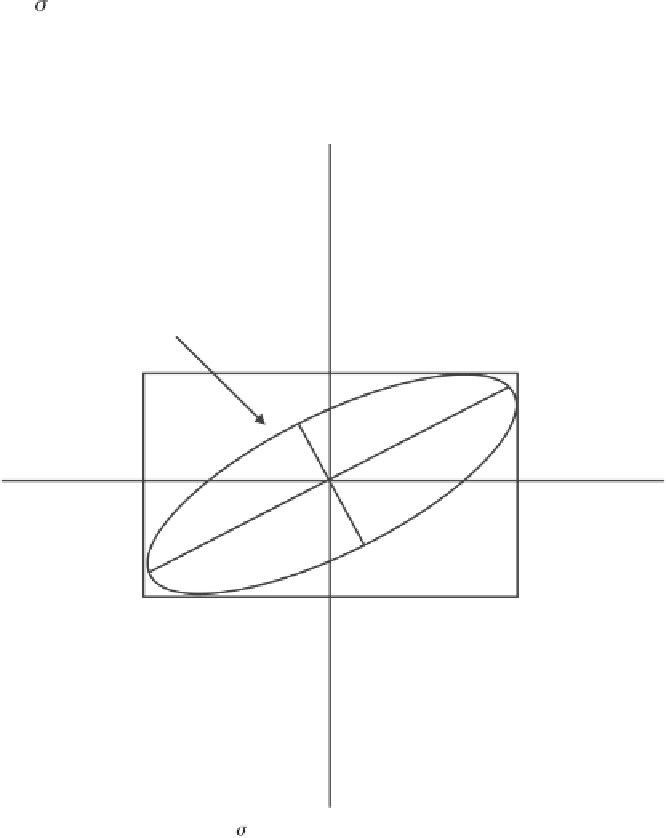Global Positioning System Reference
In-Depth Information
(The 1 ellipse is defined here as a specific cut through the pdf and is not to be con-
fused with 1 containment. The latter curve is the locus of points, one point on each
ray from the origin, where the points are at a distance of 1 for the ray's direction. In
general, the 1 containment curve is a figure-eight-shaped curve that encloses the 1
ellipse.) If the major and minor axis of the ellipse are aligned with the
x
and
y
axes,
the equation for the ellipse reduces to
x
. In general, however, the
off-diagonal terms in cov(
d
R
) are nonzero, and the elliptical contours for the density
function are rotated relative to the
x
and
y
axes. Denote the major and minor axes of
the 1
2
/
σ
2
+
y
2
/
σ
2
=
1
x
y
σ
S
(“long” and “short”), respectively. In general, the 1
ellipse is contained in a box of width
ellipse by
σ
L
and
σ
y
centered on the ellipse. Figure
7.6 illustrates graphically the relationship between the ellipse and the parameters
σ
x
and height
σ
x
,
σ
y
,
σ
S
.
The probability that the error lies within the elliptical contour defined for a spe-
cific value of
m
is1
σ
L
, and
2
−
m
/
2
−
e
. In particular, the probability of being in the 1
ellipse (
m
=
2) is 0.86. (These values
are in contrast to the one-dimensional Gaussian result that the probability of being
within
1) is 0.39; the probability of being in the 2
ellipse (
m
=
1 of the mean is 0.68.)
Several parameters are in common use that characterize the magnitude of the
horizontal error. The
distance root mean square
(drms) is defined by the formula
±
y
T
1
σ
ellipse:
xy
,
pairs
u
= ( , )
xy
T
−
1
satisfying
u
[cov(d )]
R
u
= 1
σ
y
σ
L
σ
S
σ
x
x
2
+=+
2
2
2
σσ σ σ
x
y
L
S
= DRMS
2
Figure 7.6
Relationship between 1
ellipse and distribution parameters.










Search WWH ::

Custom Search